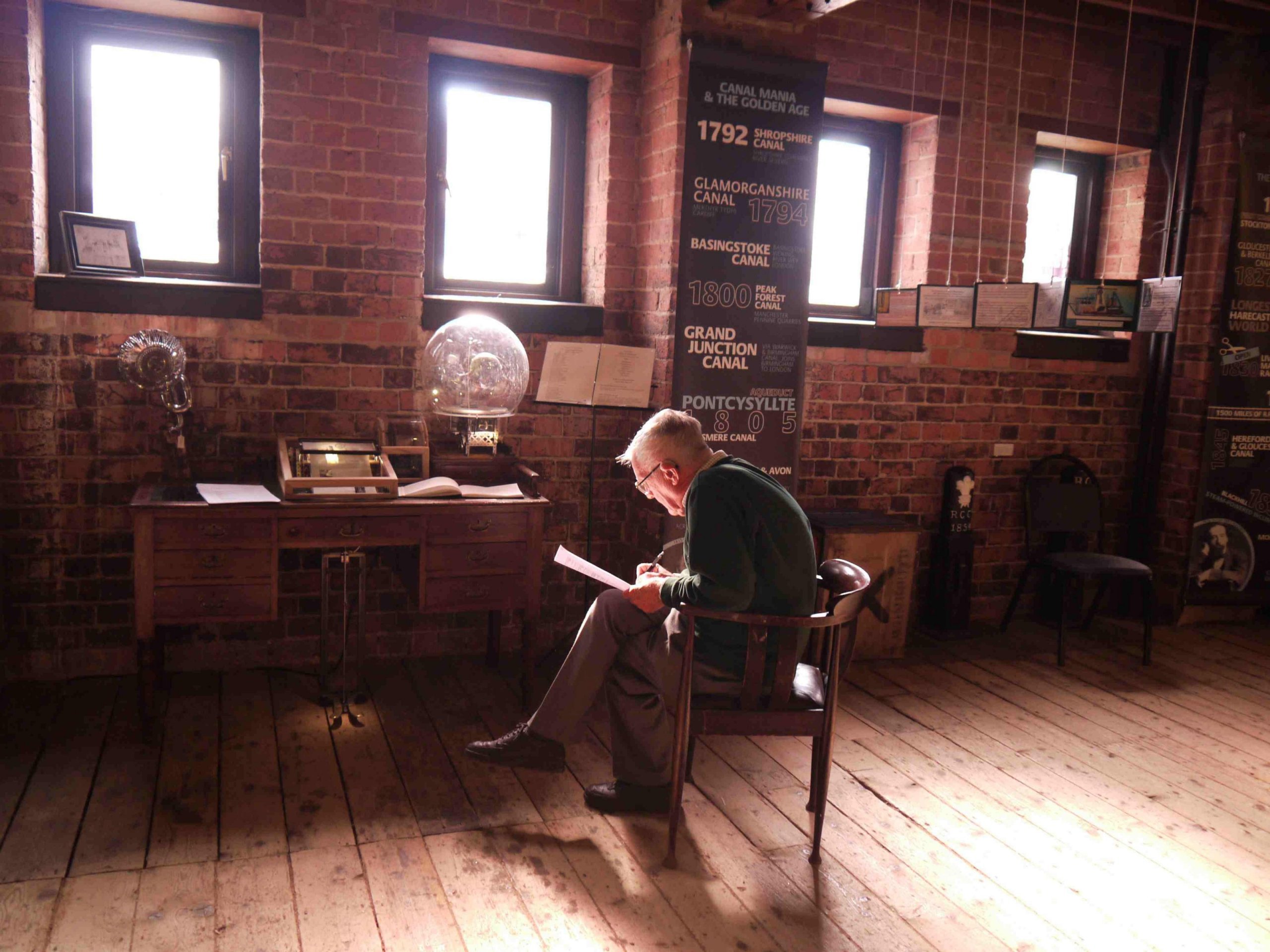
A volunteer at the Gloucester Waterways Museum
Photo: Tara Downs
Talking with confidence
A recent visual arts and museums project offered volunteers training to enable them to talk more knowledgably and confidently to visitors, says Carolyn Black.
Flow Contemporary Arts initiated the Friction Project to encourage cross-sector understanding between visual arts and museums. Artists Tara Downs and Bart Sabel were commissioned to create an interactive artwork that responds to both people and places, working with three museums in Gloucestershire – the Gloucester Waterways Museum, the Museum in the Park in Stroud and the Holst Birthplace Museum in Cheltenham. By touring the resultant Miniature Museum of Museums between the three museums, stories from each museum are journeying across the county, joining up museum staff, volunteers and audiences in a new and unexpected way. Volunteers are passionate about the museums they work in and have been willing to talk with the artists during their research, which informed the content of this ‘cabinet of curiosity’. The facts and the stories heard were woven together by the artists in their unique way, reflecting the interaction of the people involved and the knowledge they hold.
The artists shared their work-in-progress and everyone asked questions and discussed the concepts behind the work
Before the artwork was completed, we hosted a training day for volunteers, run by Gill Nicol from Lightsgoingon. The aim of the day was to support the volunteers to gain confidence, knowledge and skills about the artwork, so they would feel comfortable discussing it. It was also to encourage them to be curious, introduce them to contemporary art practices and give them a way into how to talk about this ‘thing’ that they would be looking after in their museums.
Around 20 people participated, spread fairly equally across the three museums. The attenders from the largest museum, the Waterways Museum, were all volunteers, while several staff and volunteers came from the other two. Gill Nicol did a very accessible and enjoyable presentation, trotting through contemporary art from the twentieth century onwards, with a focus on the art done by artists who often work with museums. The artists shared their work-in-progress and everyone asked questions and discussed the concepts behind the work. This was significant because much of the enthusiasm demonstrated in the room had been created by the way the artists had met with people in the museums during their research. There was a real sense of involvement which has been taken back into the museums, providing a valuable bridge between the artists, the artwork and the host organisations.
The training was informed by previous work that Gill has delivered for much larger museums, where there are stewards or invigilators in every room. These three much smaller museums do not have so many people on the ground, so there is proving to be less opportunity for the workshop participants to share their learning with the public. But they do talk about the artwork with each other, ensuring there is strong knowledge-sharing taking place across the museums through a forwarding process.
The feedback from the day was excellent. 50% of attendees said they felt confident or very confident at the beginning of the day and by the end 80% felt that way. One commented: “A great day. Lovely friendly staff. Inspired me to really interact with the work when it visits.” And another: “An informative day, not only about the 'work' but more general introduction to artists and contemporary art – boosting confidence in this area.”
As the work moves from one museum to another, the project aims to forward this learning by regularly keeping in contact with the volunteers, listening to their feedback and evaluating the work’s impact at each place from their perspective. It is a fascinating process of becoming familiar with both research and presentation and reveals much we can all learn from.
Carolyn Black is a visual arts producer and writer.
www.flowprojects.org.uk
Join the Discussion
You must be logged in to post a comment.